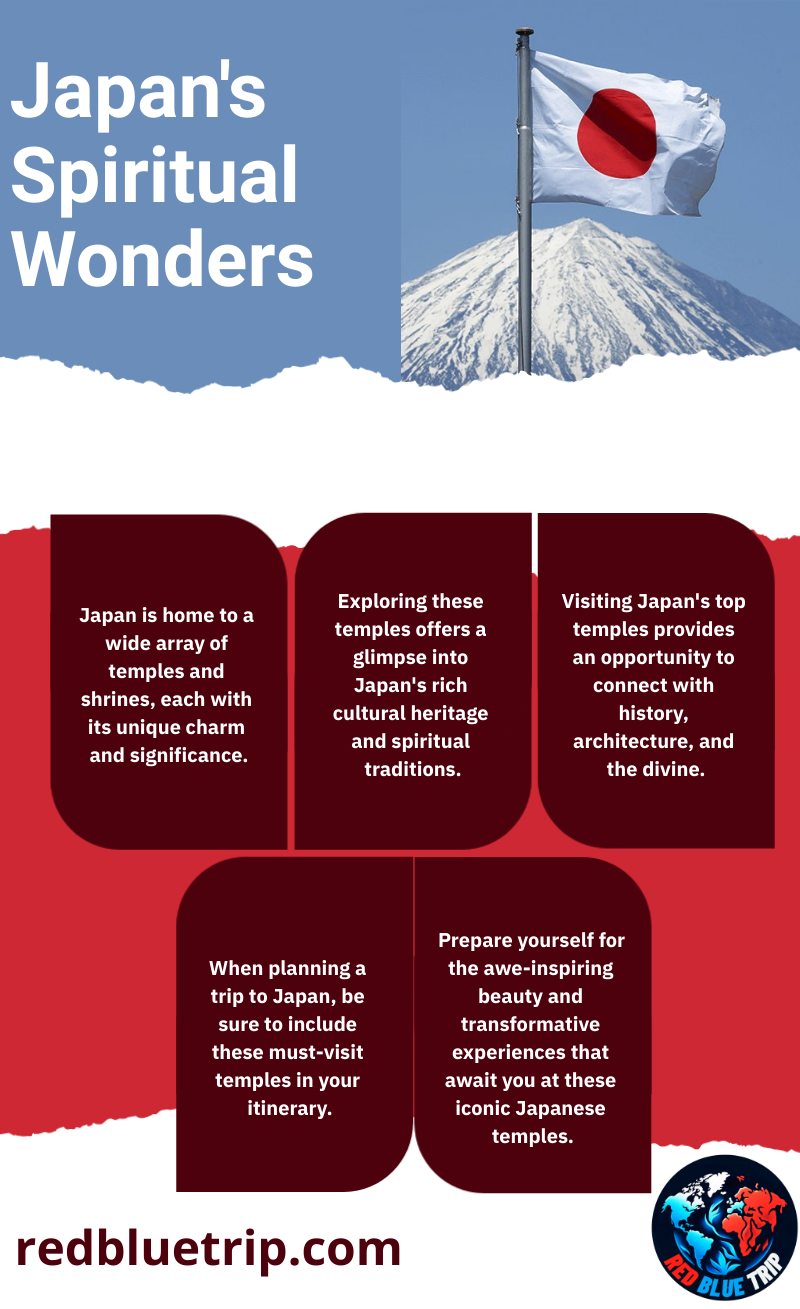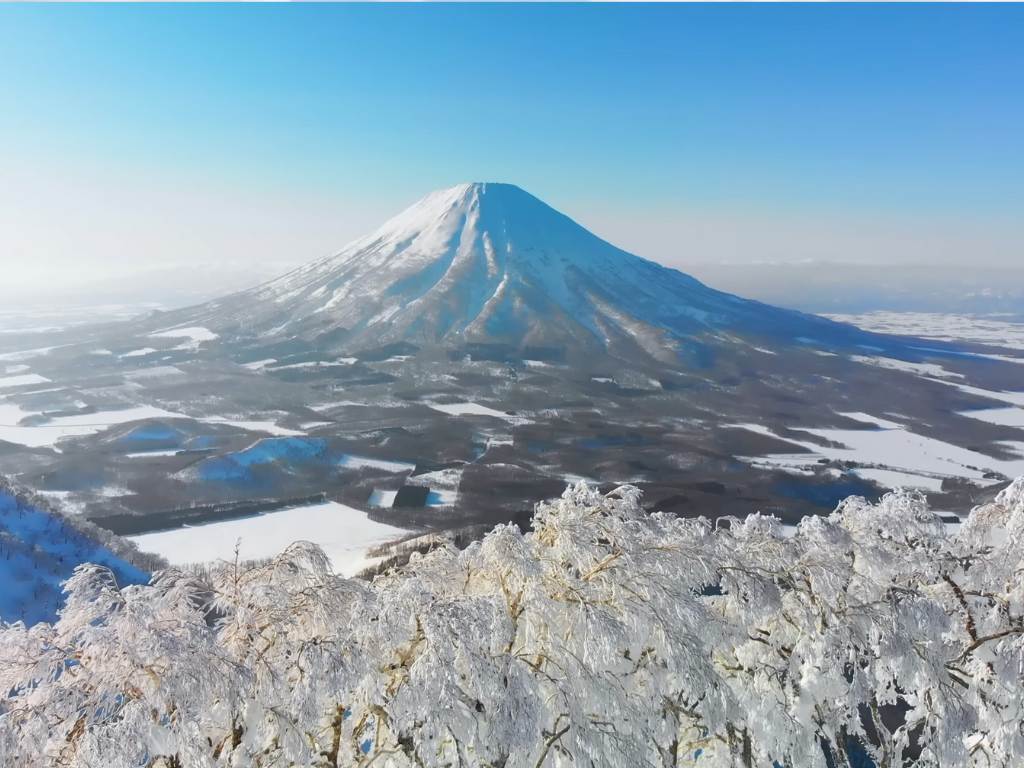Did you know that Japan is home to thousands of temples and shrines spread across its picturesque landscapes? These spiritual havens not only offer a deep insight into Japan’s rich cultural traditions but also provide a serene sanctuary for visitors seeking solace and spiritual enlightenment.
Take a moment to imagine strolling through tranquil gardens, surrounded by centuries-old architecture, and soaking in the peaceful aura that permeates these sacred sites. Whether you’re an architecture enthusiast, history buff, or simply seeking a spiritual experience, Japan’s top temples are bound to captivate your imagination and leave you with a profound sense of wonder.

Senso-ji Temple, Tokyo
Immerse yourself in the rich history and spiritual aura of Senso-ji Temple, the oldest temple in Tokyo. With its origins dating back to 628 AD, this iconic Buddhist site holds great significance and draws visitors from all over the world.
As you approach Senso-ji Temple, prepare to be awe-inspired by the majestic Thunder Gate. This grand entrance not only marks the beginning of your spiritual journey but also serves as a symbol of protection and strength. Step through the gate and feel a wave of tranquility wash over you as you enter the temple grounds.
One of the highlights of Senso-ji Temple is the traditional practice of omikuji fortune-telling. Visitors can obtain a fortune slip that provides insight and guidance for various aspects of life, including love, health, and career. Whether you receive a favorable fortune or a cautionary one, this experience offers a unique opportunity for self-reflection.
After exploring the spiritual wonders of Senso-ji Temple, take a leisurely stroll down the Nakamise shopping street. This lively promenade, lined with vibrant stalls and shops, offers a delightful array of traditional crafts, souvenirs, and delectable snacks. Indulge in the local delicacies and pick up a meaningful keepsake to cherish the memories of your visit.
Senso-ji Temple, with its profound history, Thunder Gate, omikuji fortune-telling, and bustling Nakamise shopping street, truly embodies the spiritual essence of Tokyo. Discover the magic and serenity of this iconic temple, and let its ancient wisdom guide you on a transformative journey.
Meiji Shrine, Tokyo
Escape the bustling city of Tokyo and find solace in the serene Meiji Shrine. Located in the Shibuya district, this peaceful respite offers a tranquil retreat from the urban chaos. The shrine is dedicated to Emperor Meiji and Empress Shoken, revered figures in Japanese history.
As you enter the shrine’s grounds, you’ll be surrounded by lush forests, creating a soothing atmosphere for meditation and reflection. Walk along the winding paths and appreciate the beauty of nature, feeling the stress melt away with each step.
One of the notable features of Meiji Shrine is its display of sake barrels. These barrels, offered by sake breweries from all over Japan, symbolize the connection between the divine and the earthly. They represent the gratitude and respect people have for the deified spirits of Emperor Meiji and Empress Shoken.
Whether you’re seeking a spiritual experience, a moment of tranquility, or simply a chance to immerse yourself in Japanese culture, Meiji Shrine is a must-visit destination in Tokyo. Take your time to explore its serene surroundings, pay your respects, and find inner peace amidst the bustling city.
Offerings at Meiji Shrine
| Offerings | Meaning |
|---|---|
| Sake Barrels | Symbolize the connection between the divine and the earthly |
| Omamori Charms | Bring good luck and protection |
| Ema Wooden Plaques | Write wishes or prayers and hang them for the deities to receive |
| Ancestral Tablets | Provide a place for memorial services and remembrance |
Kinkaku-ji (Golden Pavilion), Kyoto
Kinkaku-ji, also known as the Golden Pavilion, is a Zen Buddhist temple located in Kyoto. Its golden exterior, adorned with gold leaf, gives it a fairy tale-like appearance. The temple’s mesmerizing beauty extends to its enchanting gardens, creating a tranquil setting for contemplation and appreciation of Japanese aesthetics.
As one of Kyoto’s most iconic landmarks, Kinkaku-ji is a testament to the rich cultural heritage of Japan. The temple’s three-story structure shimmers in the sunlight, reflecting its golden sheen on the surrounding pond. The meticulous craftsmanship and attention to detail in its design make it a true architectural masterpiece.
Visitors to Kinkaku-ji can explore the temple’s interior, but the true magic lies in its exterior beauty. The reflection of the Golden Pavilion in the tranquil pond creates a sense of harmony and serenity that is truly captivating.
The temple’s stunning gardens further enhance the enchanting atmosphere. Strolling through the meticulously manicured paths, visitors can admire the carefully placed stones, vibrant foliage, and serene water features. Each element of the garden is thoughtfully designed to create a sense of peace and tranquility.
Kinkaku-ji offers a unique opportunity to immerse yourself in the world of Zen Buddhism while surrounded by the beauty of nature. Whether you’re seeking spiritual enlightenment or simply wish to appreciate the captivating aesthetics of Japanese culture, a visit to Kinkaku-ji is an unforgettable experience.
Fushimi Inari Taisha, Kyoto
Fushimi Inari Taisha, located in Kyoto, is a captivating destination that attracts visitors from all over the world. The shrine is renowned for its mesmerizing feature – thousands of vermilion torii gates that form a breathtaking pathway up Mount Inari. As you embark on this sacred journey, the vibrant red gates surround you, creating a spiritual labyrinth that leads you deeper into the realm of divinity.
What sets Fushimi Inari Taisha apart from other temples is the personal experience it offers with the divine. As you venture further up the mountain, you will notice that the crowds begin to thin out, allowing for moments of solitude and connection with the spiritual energy of the place. Whether you are seeking guidance or simply seeking inner peace, this sacred site provides a serene and introspective atmosphere for a profound personal experience with the divine.
The vermilion torii gates themselves hold great symbolism. Each gate is sponsored by individuals or businesses as a gesture of reverence and gratitude. This collective act of devotion and the continuous line of torii gates create a powerful spiritual ambiance as you pass through each one. It is believed that by passing through these gates, one receives blessings and protection, enhancing the spiritual significance of the journey.
FAQ
What makes Senso-ji Temple in Tokyo special?
Senso-ji Temple is Tokyo’s oldest temple, dating back to 628 AD. It holds significant importance for Buddhists and welcomes visitors with its iconic Thunder Gate. The temple also offers traditional fortune-telling practices and the opportunity to purchase good luck charms. The bustling Nakamise shopping street leading to the temple is also a popular attraction.
What can I expect at Meiji Shrine in Tokyo?
Meiji Shrine provides a peaceful respite in the bustling Shibuya district of Tokyo. Dedicated to Emperor Meiji and Empress Shoken, this Shinto shrine is surrounded by lush forests, creating a serene environment for meditation and reflection. The shrine is also known for its display of sake barrels, symbolizing the connection between the divine and the earthly.
What makes Kinkaku-ji (Golden Pavilion) in Kyoto unique?
Kinkaku-ji, also known as the Golden Pavilion, is a Zen Buddhist temple in Kyoto. Its stunning golden exterior, covered in gold leaf, gives it a fairy tale-like appearance. The temple is renowned for its enchanting gardens, providing a tranquil setting to appreciate Japanese aesthetics.
Why is Fushimi Inari Taisha in Kyoto famous?
Fushimi Inari Taisha is famous for its thousands of vermilion torii gates that create a mesmerizing pathway up Mount Inari. Each gate is donated by individuals or businesses, resulting in a spiritual journey through a labyrinth of gates. As visitors ascend the mountain, they can experience a more personal connection with the divine.
Source Links
- https://www.triptojapan.com/blog/top-10-must-visit-temples-and-shrines-in-japan-your-guide
- https://medium.com/@hana.hana2x4/must-visit-temples-and-shrines-in-japan-a-spiritual-journey-through-the-land-of-the-rising-sun-1d15c4314ac6
- https://www.moon.com/travel/planning/japans-top-temples-and-shrines/

